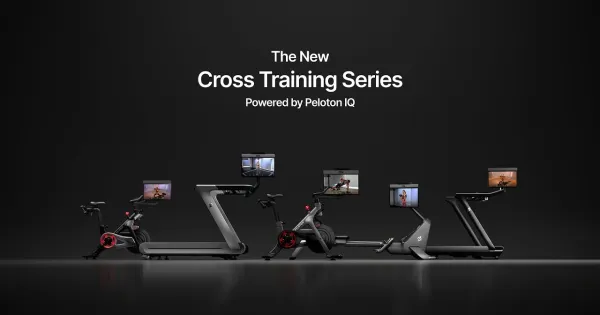4 Ways Community Powers Business Innovation

Innovation has always been key to business progress, from new technologies to business models. However, it's no longer limited to R&D departments or executive teams. Communities—made up of customers, employees, partners, and even competitors—are increasingly shaping innovation.
Community-driven innovation leverages the collective knowledge and skills of a wider network to spark new ideas, solve problems, and drive growth. By tapping into their communities, businesses gain fresh insights that internal teams alone may miss.
This article will highlight 4 ways community fuels innovation and share strategies to integrate it into your business processes.
Way 1) Collaborative Innovation

Understanding Collaborative Innovation
The first and perhaps most obvious way that communities drive innovation is through collaborative creativity. Collaborative innovation happens when businesses engage with their customers, employees, or partners to generate new ideas, products, or solutions. This process often involves crowdsourcing ideas, where a company invites suggestions from a broader audience to tackle specific challenges.
At its core, collaborative innovation relies on the diversity of thought that a community offers. When businesses tap into a community’s collective intelligence, they are exposed to new perspectives and experiences that can spur innovation far beyond what an isolated team could achieve.
Real-world Examples of Crowdsourcing in Business
Some of the most successful companies have implemented crowdsourcing as a core innovation strategy. Here are a few standout examples:
- Lego Ideas: Lego launched an online community where fans can submit their own designs for Lego sets. If a design receives enough votes from the community, it moves forward for review, and if approved, Lego will manufacture and sell the set, crediting the creator. This crowdsourcing model has led to highly popular products that might have never been created within traditional R&D processes.
- Unilever’s Open Innovation Platform: Unilever invites external innovators, including startups and researchers, to contribute ideas that help solve major challenges in sustainability, health, and nutrition. By opening up innovation to a broader community, Unilever has been able to integrate breakthrough technologies into its product lines.
- Threadless: This design company built its entire business model around crowdsourcing. It invites community members to submit t-shirt designs, which are then voted on by other users. The highest-rated designs are produced, and the creators are compensated. This process keeps their product lines fresh and aligns perfectly with customer preferences.
Actionable Insights for Encouraging Collaborative Creativity
To successfully leverage crowdsourcing and community-based creativity, businesses need to:
- Create clear guidelines: Provide structured guidelines for idea submission to ensure the ideas you receive are actionable and relevant.
- Offer incentives: Reward contributions with tangible benefits, such as financial incentives, recognition, or exclusive access to products.
- Encourage diversity: Actively seek participation from a wide range of community members to maximize the diversity of ideas.
- Facilitate collaboration: Provide platforms and tools that enable participants to collaborate on ideas, as collective brainstorming often leads to stronger innovations.
By implementing these practices, businesses can make the most of the creative potential of their communities.
Way 2) Feedback and Adaptation

The Importance of Feedback Loops
One of the most powerful aspects of engaging with a community is the ability to gather real-time feedback on products, services, or ideas. Whether it’s beta testing a new app, seeking reviews on a new product, or asking for suggestions on improving customer service, businesses can use community feedback to iterate quickly and continuously.
Feedback loops are critical for innovation because they allow companies to test ideas in real-world settings and make data-driven decisions about improvements. By involving the community in this process, businesses can identify flaws, uncover hidden opportunities, and enhance their offerings much faster than relying on internal assessments alone.
Leveraging Real-time Community Insights
Platforms like social media, online forums, and dedicated customer communities offer real-time access to feedback. The ability to monitor community discussions, sentiment, and engagement allows businesses to stay connected to their users’ needs and preferences.
For example, gaming companies often release early-access versions of their games to dedicated player communities. These players provide invaluable feedback, highlighting bugs, balance issues, and new features they’d like to see. The companies can then integrate this feedback before launching the final product, ensuring it meets user expectations.
Similarly, tech giants like Microsoft and Google have extensive user communities that test beta versions of software. Their feedback helps developers refine products, resolve issues, and prioritize new features that align with user demand.
Strategies for Implementing Feedback into Product Design
To leverage community feedback effectively, businesses should:
- Create dedicated feedback channels: Build platforms (forums, surveys, social media groups) where users can provide feedback and engage directly with the business.
- Establish a rapid iteration process: Implement a feedback loop system where feedback is quickly analyzed and incorporated into development.
- Be transparent: Communicate with the community about how their feedback is being used. Transparency builds trust and encourages continued participation.
- Prioritize key insights: Not all feedback is actionable, so businesses must develop methods for prioritizing the most valuable feedback and focusing on the changes that will drive the most significant innovation.
Incorporating these strategies into product design will ensure that businesses are constantly evolving in line with their community’s needs.
Way 3) Internal Innovation

The Role of Internal Communities
While customer and external communities are vital for innovation, internal communities—comprising employees—can be just as impactful. Employees are often on the front lines, dealing with product challenges, customer pain points, and operational inefficiencies. Empowering employees to contribute ideas can drive bottom-up innovation that solves real problems and accelerates business growth.
Internal innovation communities create a culture of openness, creativity, and collaboration. When employees feel safe to express ideas and take risks, innovation can flourish. Companies like Google have famously implemented “20% time,” allowing employees to spend 20% of their work hours on projects outside of their core responsibilities. This initiative has led to significant innovations, including Gmail and Google Maps.
Case Studies of Employee-driven Innovation
Several companies have built successful innovation cultures within their employee communities:
- 3M: 3M encourages employees to dedicate 15% of their work hours to developing new products or solutions. This policy led to the invention of the Post-it Note, one of 3M’s most successful products, which was initially an employee-driven side project.
- Toyota: Toyota’s Kaizen philosophy encourages continuous improvement and innovation from all employees. The company empowers workers at all levels to suggest changes, no matter how small, leading to incremental innovations that collectively drive massive operational efficiencies.
- Facebook: Facebook holds regular internal hackathons, where employees from different departments can collaborate on innovative side projects outside of their usual roles. One famous example of this is the development of the "Like" button, which originated from one of these hackathons. This simple feature has since become a core aspect of the platform, significantly enhancing user engagement.
Best Practices for Encouraging an Innovation Culture
For businesses aiming to cultivate innovation within their employee communities, consider these best practices:
- Create a safe space for idea-sharing: Encourage open dialogue and ensure that employees feel safe sharing their ideas without fear of failure or judgment.
- Offer time and resources: Dedicate time within the workweek for employees to focus on creative projects outside their usual responsibilities.
- Recognize and reward contributions: Implement formal systems for recognizing and rewarding employee innovations, from bonuses to public recognition.
- Encourage collaboration: Build cross-departmental teams to bring diverse skill sets and perspectives together, leading to more well-rounded innovations.
By creating an environment where employees are empowered to innovate, businesses can unlock a wealth of untapped potential within their internal community.
Way 4) External Partnerships

Open Innovation: Collaborating with External Partners
Innovation is no longer a process confined to a single organization. Increasingly, businesses are adopting open innovation models that rely on external partnerships to co-create new products, technologies, and services. Open innovation allows companies to leverage the knowledge, skills, and resources of external entities—such as universities, startups, suppliers, and even competitors—to drive breakthroughs that they might not achieve alone.
One notable example is Procter & Gamble’s Connect + Develop initiative, which invites external partners to collaborate on solving the company’s biggest challenges. This program has resulted in numerous successful product innovations, such as the Swiffer cleaning system, which was developed in collaboration with an outside firm.
The Role of Industry Ecosystems and Startups
Startups are often a key component of external innovation partnerships. Large companies increasingly look to startups for fresh ideas, disruptive technologies, and agile approaches to problem-solving. In return, startups gain access to the resources and distribution channels of established businesses.
For example, BMW’s Startup Garage acts as an incubator for young companies with promising automotive technologies. By collaborating with these startups, BMW stays at the cutting edge of automotive innovation without bearing all the risks and costs associated with early-stage development.
Industry ecosystems, where companies across sectors collaborate, also play a critical role. These ecosystems bring together diverse players, including competitors, to address shared challenges, such as sustainability or supply chain resilience. By working together, these organizations can pool their knowledge and resources to create solutions that benefit the entire industry.
Tips for Building Strategic Partnerships for Innovation
To maximize the impact of external partnerships on innovation, businesses should:
- Identify complementary strengths: Look for partners that bring different strengths to the table, such as technical expertise, market access, or manufacturing capabilities.
- Establish clear goals and metrics: Set clear objectives for the partnership and define how success will be measured.
- Create long-term relationships: Invest in building trust with external partners to ensure long-term collaboration and innovation.
- Create win-win agreements: Ensure that both parties benefit from the partnership by sharing risks and rewards equitably.
By strategically collaborating with external partners, businesses can expand their innovation capabilities beyond their internal resources.
Final Thoughts
The role of community in driving innovation will only continue to grow. From harnessing the collective creativity of customers and employees to building strategic partnerships with external innovators, companies that effectively leverage their communities will have a competitive advantage in the marketplace.
The future of business innovation lies in embracing the diversity of thought, experience, and expertise that communities offer. By engaging with these communities in meaningful ways, businesses can unlock new possibilities, solve complex problems, and stay ahead of the curve.
Key Takeaways
| Way | Key Takeaways |
|---|---|
| 1. Collaborative Innovation | - Crowdsourcing ideas leads to diverse solutions. - Examples like Lego Ideas and Unilever’s Open Innovation show successful product development through community input. |
| 2. Feedback and Adaptation | - Real-time feedback from communities allows for quick iterations and improvements. - Social media and forums are effective for gathering and implementing feedback. |
| 3. Internal Innovation | - Employee-driven innovation enhances creativity and problem-solving. - Companies like Google and 3M support employee projects that lead to major innovations. |
| 4. External Partnerships | - Open innovation through external partnerships broadens the resource pool. - Collaborations with startups and industry ecosystems drive cutting-edge innovations. |





